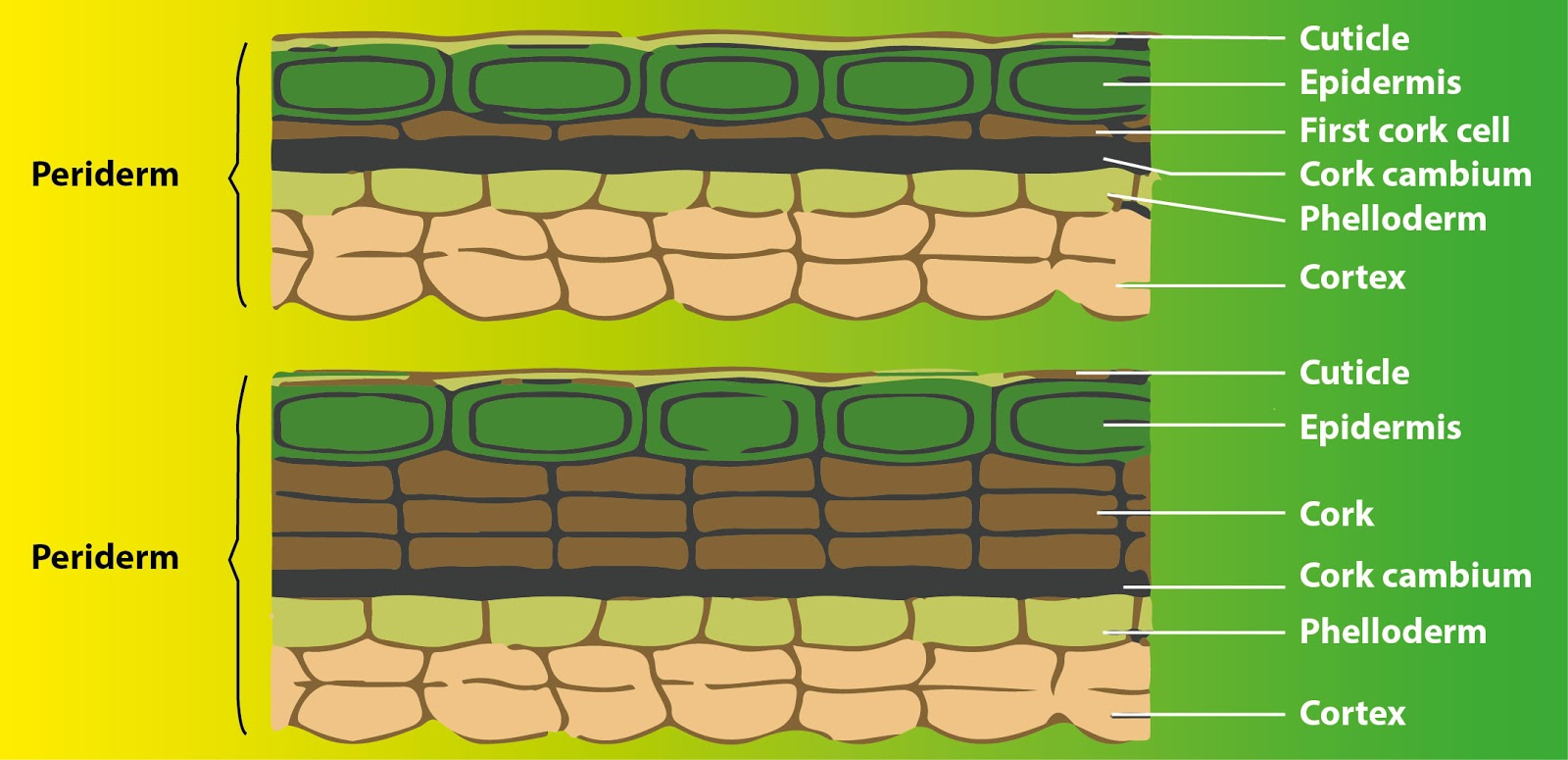
Periderm includes
(a) Phellem
(b) Phelloderm
(c) Phellogen
(d) Phellem, Phelloderm, and Phellogen
Answer
498.3k+ views
Hint: It is a cylindrical tissue that covers the surfaces of stems and roots of perennial plants during early secondary growth; therefore it is not found in monocots and is bound to those gymnosperms and eudicots that show secondary development.
Complete answer
During development in the thickness of stems and establishment of gymnosperms and dicotyledons (i.e., secondary development) the periderm is the secondary defensive dermal tissue that replaces the epidermis. In contrast to the standard epidermis, the periderm might be a multilayered tissue framework, most of which generally establishes the cork or phellem, phellogen or cork cambium, and phelloderm.
Additional information
The term periderm etymologically means “about, around” (from the Greek peri) and “skin” (from the Greek derma). Along these lines, it largely relates to an external defensive layer. The term periderm is the external covering of specific plants, particularly woody plants in botany. It is the outermost layer of the bark made from cork cells, cork cambium, and phelloderm. The epidermis of the stems and woody plants will be replaced. It is more effective for preventing water loss and is more resistant to mechanical injuries. Due to this, the cork cells are situated at the outermost. These cells are dead cells impregnated with materials such as tannins and suberin. The cork cells originate from the cork cambium and it is the meristematic part of the periderm.
Aside from the cork cells, the cork cambium likewise gives new cells that structure the inward layer of the periderm, phelloderm.
So the correct answer is ‘Phellem, Phelloderm, and Phellogen’.
Note:
The term periderm is also used in embryology and zoology. In embryology, it relates to the farthest layer of specific embryos and fetuses at the 6th month gestational age. This layer, likewise called epitrichium, typically vanishes before birth. In zoology, another term for perisarc is the periderm, which is defined as the outer hard covering in the case of many hydroids.

Complete answer
During development in the thickness of stems and establishment of gymnosperms and dicotyledons (i.e., secondary development) the periderm is the secondary defensive dermal tissue that replaces the epidermis. In contrast to the standard epidermis, the periderm might be a multilayered tissue framework, most of which generally establishes the cork or phellem, phellogen or cork cambium, and phelloderm.
Additional information
The term periderm etymologically means “about, around” (from the Greek peri) and “skin” (from the Greek derma). Along these lines, it largely relates to an external defensive layer. The term periderm is the external covering of specific plants, particularly woody plants in botany. It is the outermost layer of the bark made from cork cells, cork cambium, and phelloderm. The epidermis of the stems and woody plants will be replaced. It is more effective for preventing water loss and is more resistant to mechanical injuries. Due to this, the cork cells are situated at the outermost. These cells are dead cells impregnated with materials such as tannins and suberin. The cork cells originate from the cork cambium and it is the meristematic part of the periderm.
Aside from the cork cells, the cork cambium likewise gives new cells that structure the inward layer of the periderm, phelloderm.
So the correct answer is ‘Phellem, Phelloderm, and Phellogen’.
Note:
The term periderm is also used in embryology and zoology. In embryology, it relates to the farthest layer of specific embryos and fetuses at the 6th month gestational age. This layer, likewise called epitrichium, typically vanishes before birth. In zoology, another term for perisarc is the periderm, which is defined as the outer hard covering in the case of many hydroids.

Recently Updated Pages
Master Class 12 Business Studies: Engaging Questions & Answers for Success

Master Class 12 Economics: Engaging Questions & Answers for Success

Master Class 12 English: Engaging Questions & Answers for Success

Master Class 12 Maths: Engaging Questions & Answers for Success

Master Class 12 Social Science: Engaging Questions & Answers for Success

Master Class 12 Chemistry: Engaging Questions & Answers for Success

Trending doubts
What is meant by exothermic and endothermic reactions class 11 chemistry CBSE

Which animal has three hearts class 11 biology CBSE

10 examples of friction in our daily life

One Metric ton is equal to kg A 10000 B 1000 C 100 class 11 physics CBSE

1 Quintal is equal to a 110 kg b 10 kg c 100kg d 1000 class 11 physics CBSE

Difference Between Prokaryotic Cells and Eukaryotic Cells




